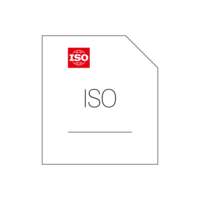ISO/TS 17892-12:2004
Ausgabedatum: 2004 10 21
Geotechnical investigation and testing — Laboratory testing of soil — Part 12: Determination of Atterberg limits
ISO/TS 17892-12:2004 specifies methods of test for the determination of the Atterberg limits of a soil. The Atterberg limits comprise the liquid limit, plastic limit and shrinkage limit. These limits are also called consistency limits. This document covers the determination of the liquid limit and the plastic limit only.
The liquid limit is the water content at which a soil changes from a liquid to a plastic state. This document describes the determination of the liquid limit of a specimen of natural soil, or of a specimen of soil from which material retained on a 0,4 mm or nearest sieve has been removed, using the fall-cone method. This standard has adopted both the 60 g/60° cone and the 80 g/30° cone as it has been shown that both cones give essentially the same value of the liquid limit. Other cone devices may be adopted provided they can be shown to give results equal to those obtained from the tests described herein.
NOTE The Casagrande method is an alternative method for the determination of the liquid limit. Experience has shown that the results are subject to the performance and judgement of the operator. Moreover, the Casagrande type apparatus and test method have undergone many small but significant variations since it was first proposed by Casagrande in 1932. These variations give rise to differences in the values of the liquid limit determined from the test. The fall-cone method is the preferred method of determining the liquid limit of a soil.
The plastic limit of a soil is the lowest water content at which the soil is plastic. The determination of the plastic limit is normally made in conjunction with the determination of the liquid limit. It is recognised that the results of the test are subject to the judgement of the operator, and that some variability in results will occur.
The Atterberg limits are influenced by oxidation or other changes in the specimen, resulting from storing it too long or otherwise by treating it in an unsuitable way. This applies especially to quick clays, sulphide clays and organic soils.


